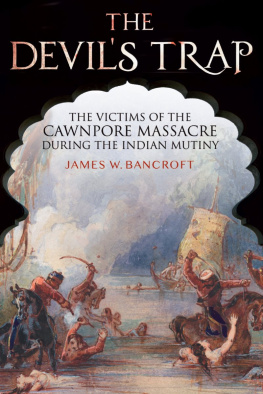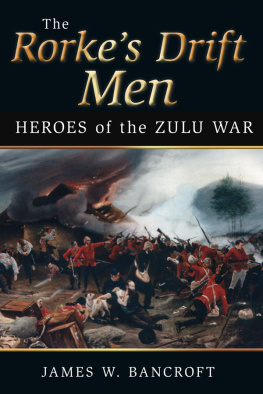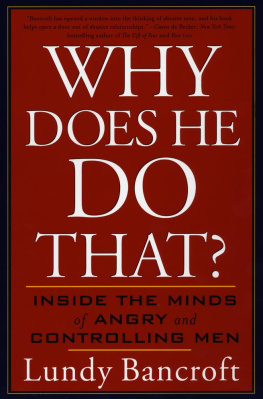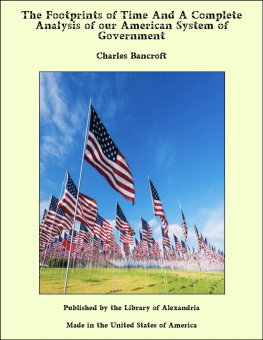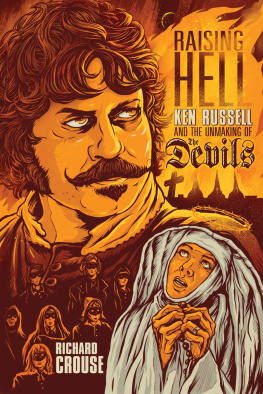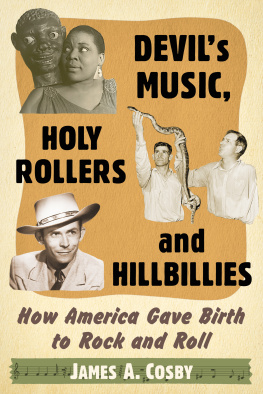James W Bancroft - The Devils Trap
Here you can read online James W Bancroft - The Devils Trap full text of the book (entire story) in english for free. Download pdf and epub, get meaning, cover and reviews about this ebook. year: 2020, publisher: Pen and Sword/Frontline Books, genre: Home and family. Description of the work, (preface) as well as reviews are available. Best literature library LitArk.com created for fans of good reading and offers a wide selection of genres:
Romance novel
Science fiction
Adventure
Detective
Science
History
Home and family
Prose
Art
Politics
Computer
Non-fiction
Religion
Business
Children
Humor
Choose a favorite category and find really read worthwhile books. Enjoy immersion in the world of imagination, feel the emotions of the characters or learn something new for yourself, make an fascinating discovery.
- Book:The Devils Trap
- Author:
- Publisher:Pen and Sword/Frontline Books
- Genre:
- Year:2020
- Rating:4 / 5
- Favourites:Add to favourites
- Your mark:
- 80
- 1
- 2
- 3
- 4
- 5
The Devils Trap: summary, description and annotation
We offer to read an annotation, description, summary or preface (depends on what the author of the book "The Devils Trap" wrote himself). If you haven't found the necessary information about the book — write in the comments, we will try to find it.
The Devils Trap — read online for free the complete book (whole text) full work
Below is the text of the book, divided by pages. System saving the place of the last page read, allows you to conveniently read the book "The Devils Trap" online for free, without having to search again every time where you left off. Put a bookmark, and you can go to the page where you finished reading at any time.
Font size:
Interval:
Bookmark:

I have come to realise that only those who have known paralysing fear, have felt the deepest abstract anxiety and been assured the perfect knowledge of complete and utter abandonment can fully understand what those poor souls went through.
Mark Probett
The Victims of the Cawnpore Massacre During the Indian Mutiny
James W. Bancroft

First published in Great Britain in 2019 by
Frontline Books
An imprint of
Pen & Sword Books Ltd
Yorkshire Philadelphia
Copyright James W. Bancroft 2019
ISBN 978 1 52671 801 3
eISBN 978 1 52671 803 7
Mobi ISBN 978 1 52671 802 0
The right of James W. Bancroft to be identified as Author of this work has been asserted by him in accordance with the Copyright, Designs and Patents Act 1988.
A CIP catalogue record for this book is available from the British Library.
All rights reserved. No part of this book may be reproduced or transmitted in any form or by any means, electronic or mechanical including photocopying, recording or by any information storage and retrieval system, without permission from the Publisher in writing.

Pen & Sword Books Limited incorporates the imprints of Atlas, Archaeology, Aviation, Discovery, Family History, Fiction, History, Maritime, Military, Military Classics, Politics, Select, Transport, True Crime, Air World, Frontline Publishing, Leo Cooper, Remember When, Seaforth Publishing, The Praetorian Press, Wharncliffe Local History, Wharncliffe Transport, Wharncliffe True Crime and White Owl.
For a complete list of Pen & Sword titles please contact
PEN & SWORD BOOKS LIMITED
47 Church Street, Barnsley, South Yorkshire, S70 2AS, England
E-mail:
Website: www.pen-and-sword.co.uk
Or
PEN AND SWORD BOOKS
1950 Lawrence Rd, Havertown, PA 19083, USA
E-mail:
Website: www.penandswordbooks.com
T o anyone of sound mind this is a heartbreaking story, and it is difficult to comprehend the dreadful events described on these pages. It was inhumanity at its worst, the Devil himself could not devise a more spine-chilling scenario, and people of a sensitive disposition must not read on.
Early in June 1857 the Honourable East India Companys strategic garrison at Cawnpore (Kanpur) came under siege from rebels. The British inhabitants included many non-combatant men, as well as women and children, who became caught up in the terrible events. They spent nearly two months under profound threat that put them in fear for their lives and the likelihood of a brutal death; but they could not have imagined how dreadful that death would be. They suffered from thirst, starvation, and heatstroke from the relentless scorching sun. They were holed up in a makeshift entrenchment, riddled with disease caused by the lack of sanitary provisions and their weakened state, and their numbers were being seriously depleted from continuous bombardment by cannonballs and bullets from rebel snipers.
On being promised safe passage out of the city by boats provided by the rebel leaders, most of the men were treacherously massacred at the Sati Chaura Ghat, a landing stage on the banks of the River Ganges. The surviving women and children were imprisoned in a house known as the Bibighar, The House of Ladies, to await their fate. This fate came on Wednesday, 15 July 1857, when at least five men, including butchers from the local bazaar, slaughtered them with swords and cleavers in a murderous frenzy. On the following morning their naked remains were unceremoniously dragged outside and thrown down a well. At least six of these victims were still clinging on to life, including three children. The culprits of this disturbing atrocity were not of the human race they were representatives of Satan. For armed individuals to attack and take the lives of defenceless people in any way is sinking to the lowest depths of sickening cowardice.
History books record that in the mid-Victorian era there was supposedly a growing sympathy for children and an idealisation of the innocence of childhood this was evidently not the case everywhere. The child victims did not understand the actions of the adults around them British and Indian which put them in a nightmare that no human of any age should have to suffer, and the heartbreak and feelings of hopelessness endured by the women who tried to protect them before they too were put out of their misery is impossible to imagine by anyone who has not suffered it. British retribution was equally merciless and repugnant, and two wrongs dont make a right.
At Cawnpore the desire to defend Indian beliefs was tarnished by the root of all evil money. Nana Sahib, the rebel leader, was embittered towards the British because the lucrative pension that had been afforded to his late adopted father was not passed to him, and the murderers at the Bibighar are believed to have performed their sick and depraved act for the reward of one rupee for every life they took.
Much has been written about the siege of Cawnpore and the political events which caused it, but there is not much information in book form concerning the people who suffered the ordeal. Who were they, and where did they come from? They left behind parents who were deeply bereaved, with no individual grave over which to grieve them. In many cases victims deaths devastated their families and produced numerous orphans. I have tried to present an informative selection of the type of people who were involved; although I am sure there will be some I have omitted who should have been included. In many cases this is because there was not enough information about them to justify a full biographical tribute.
For instance, one victim had worked with the engineer, Isambard Kingdom Brunel when he was at the height of his career; a member of a family of victims later became a well-known cricketer and footballer, who gained three Football Association Challenge Cup winners medals; the brother of one of the victims, who was himself a defender of Lucknow, later played cricket for Lancashire; and another was a descendant of an AngloNorman West Country family. I have tried to redress this imbalance of information by consulting official documentation and establishments, studying primary sources and contacting descendants, then cross-referencing and checking the information as much as possible through some previous publications and online sites such as Ancestry. com and Forces-War-Records.co.uk.
In addition to this, I have consulted my JWB Historical Library, a project that I began four decades ago, and which is now one of the largest collections of information of its kind not in an official archive. Using this method I tried to highlight the human element of the horrific events, and provide revised information where necessary.
To try to understand opinions on both sides I have also studied documents and contacted individuals who believe the events at Cawnpore were part of Indias first steps in the struggle towards eventual independence, which was finally achieved in 1947. These individuals have no misgivings concerning what happened. In some cases I organised personal meetings so that I could look through the eyes and into the souls of people who said they believed that what happened at Cawnpore was justified.
On a visit to the Sati Chaura Ghat, Sir Frederick Treves, the prominent Victorian surgeon who witnessed the hurtful sufferings of Joseph Merrick, known as the Elephant Man, wrote This is probably the very bitterest spot on Earth; this murderers stare; this devils trap; this traitors gate. The very stones are trained and festered with hate, and until it rots, the mud-covered colonnade will be found with the sneaking shadows of cowardice. A descendant of one of the victims who visited the city stated Some spirit of evil still seems to haunt the place.
Font size:
Interval:
Bookmark:
Similar books «The Devils Trap»
Look at similar books to The Devils Trap. We have selected literature similar in name and meaning in the hope of providing readers with more options to find new, interesting, not yet read works.
Discussion, reviews of the book The Devils Trap and just readers' own opinions. Leave your comments, write what you think about the work, its meaning or the main characters. Specify what exactly you liked and what you didn't like, and why you think so.

